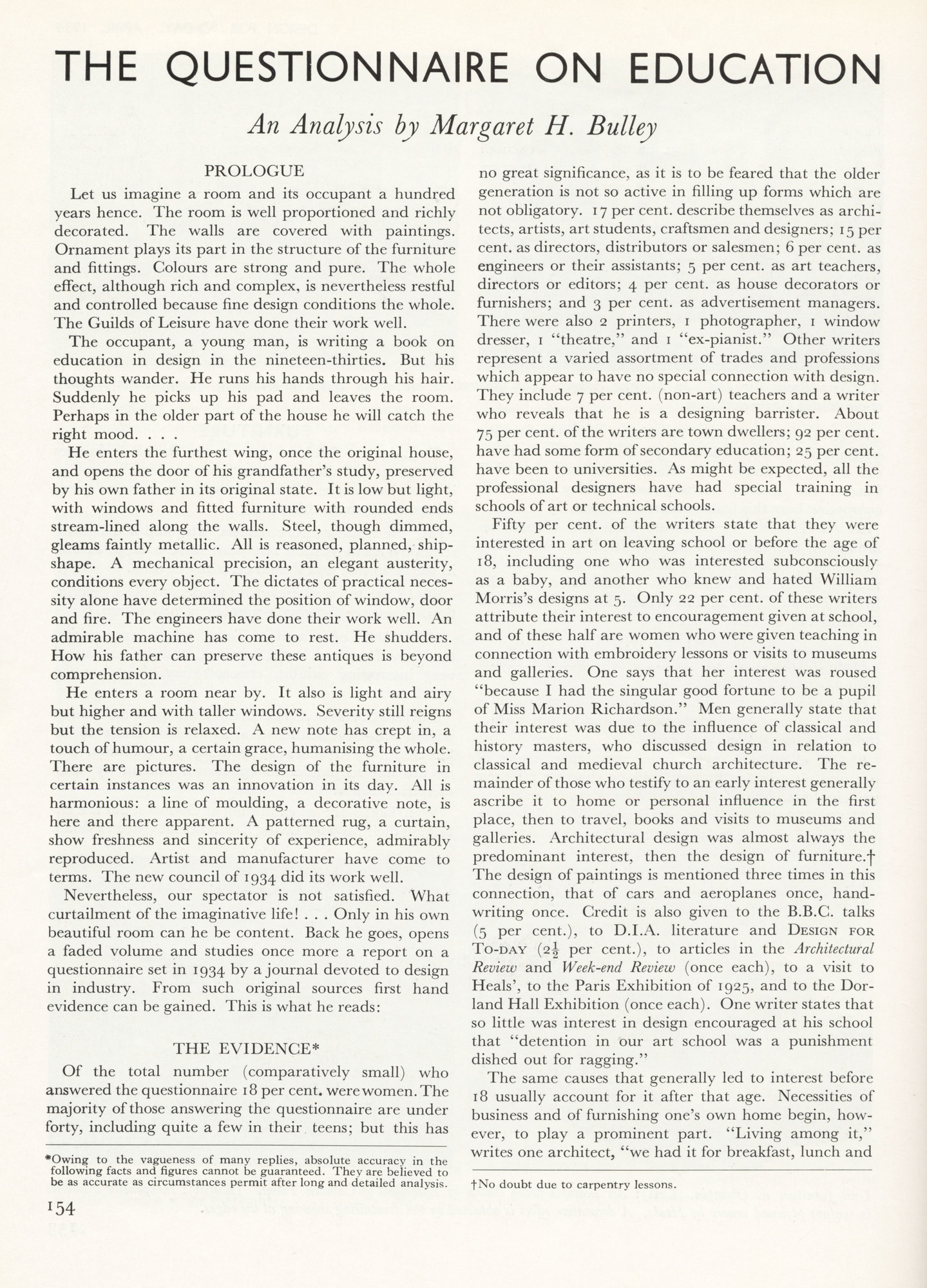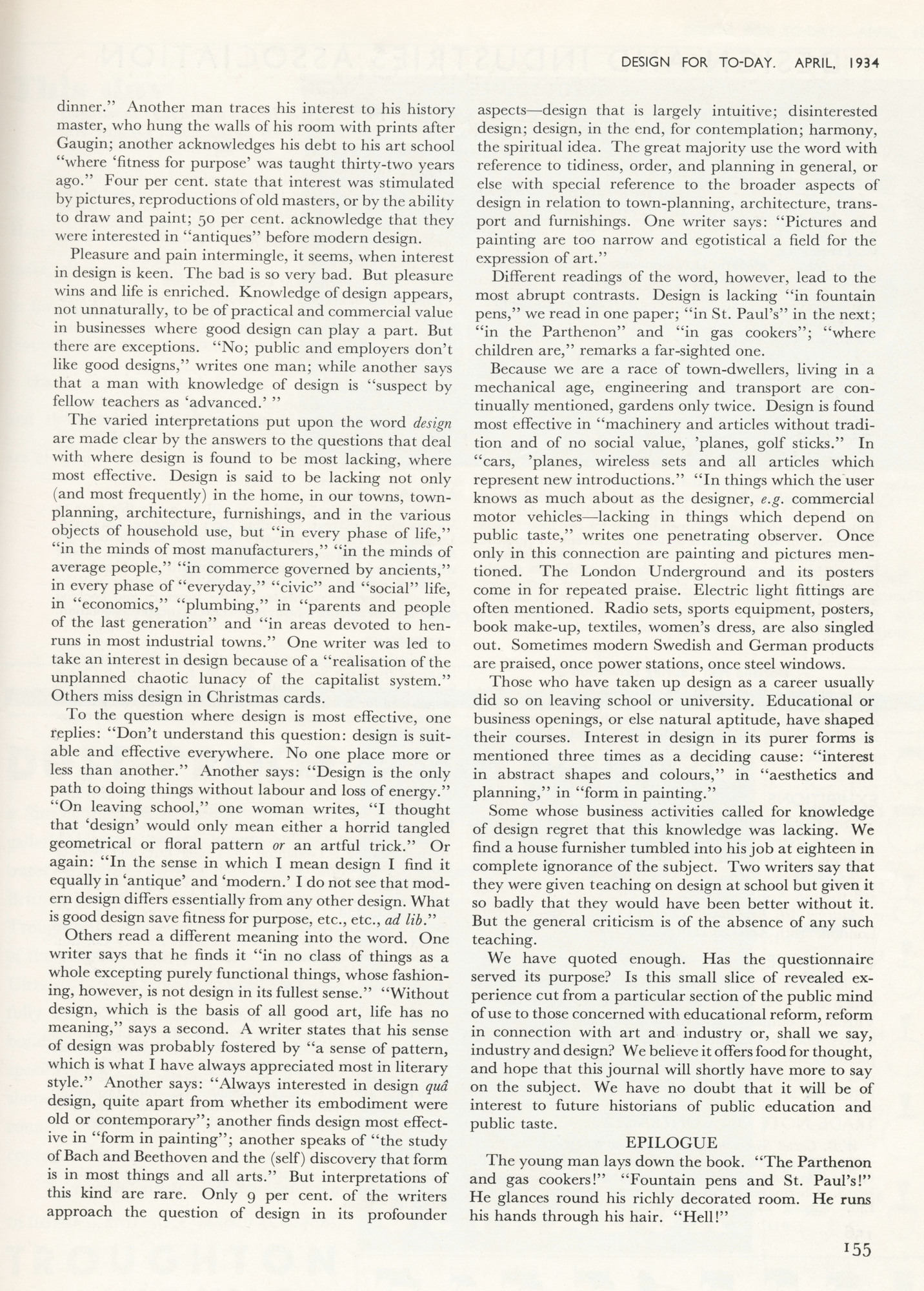4 of
You are browsing the full text of the article: The Questionnaire on Education. An Analysis
Click here to go back to the list of articles for
Issue:
Volume: 2 of Design For Today
| Design For Today 2 1934 Page: 154 | ||||||||||||||||||||||||||
| The Questionnaire on Education. An Analysis | ||||||||||||||||||||||||||
|

|
|
||||||||||||||||||||||||
| Design For Today 2 1934 Page: 155 | ||||||||||||||||||||||||||
| The Questionnaire on Education. An Analysis | ||||||||||||||||||||||||||
|

|
|
||||||||||||||||||||||||

